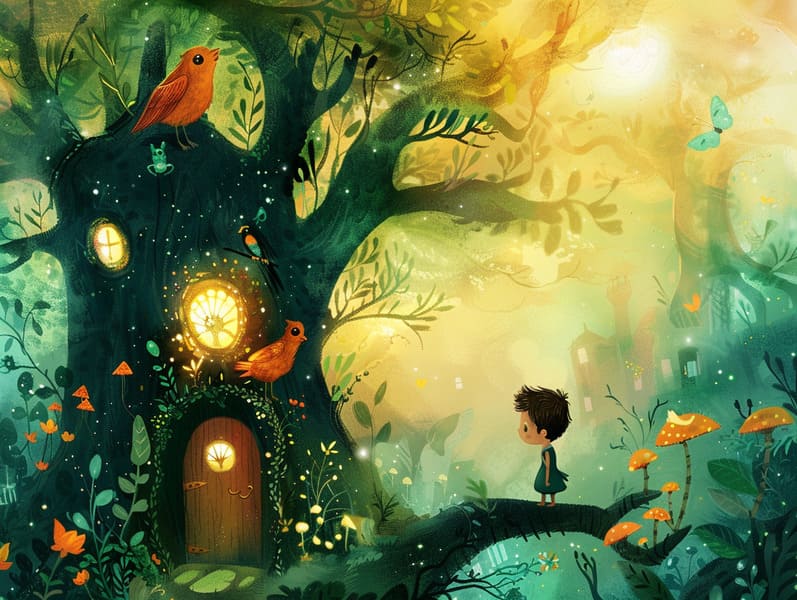The Genesis of Legendary Fairy Tales and Their Ageless Charm.
The Genesis of Legendary Fairy Tales and Their Ageless Charm.
Blog Article

Legendary fairy tales have ancient roots. These stories have been told from one generation to the next long before they were ever published. They sprang from a variety of cultures, including European traditions. They were initially shared among grown-ups, often carrying themes and messages pertaining to the societal norms and beliefs of the time.
The Grimm brothers, Jacob and Wilhelm, were among the first to assemble many of these beloved narratives. Their collection, "Grimm's Fairy Stories," included narratives like "The Story of Cinderella," "Hansel and Gretel," and "The True Story of Snow White," which have since become mainstays in the world of traditional fairy tales. Similarly, H. C. Andersen's fanciful narratives, such as "The Sea Maid," and "The Ugly Duckling," have floated into hearts worldwide, cementing their place in the pantheon of timeless fairy tales.
Despite their age, these tales remain as applicable as ever, especially as bedtime stories for kids. These enchanting tales are now available in various formats, including vibrantly illustrated books, captivating animations, and web-based fairy tales.
Their unwavering allure can be traced to several magical reasons:
Vital Lessons: Traditional fairy tales often whisper important moral lessons. Tales like "The Wolf and the Liar" teach the merit of integrity, while "The Tortoise and the Hare" exemplify the virtues of persistence and humbleness. These tales offer kids clear distinctions between right and wrong, helping to shape their moral compass in a gentle yet profound way.
Empathy and Understanding: Timeless fairy tales frequently present figures facing problems and hurdles, provoking young readers to feel with their struggles and celebrate their triumphs. For instance, "The Story of Beauty and the Beast" teaches us the virtue of seeing beyond the surface to recognize the real character of a individual, promoting warmth and knowledge.
Cultural Perception: Many fairy tales are deeply ingrained in the cultural contexts from which they bloomed. Engaging with these stories can provide informative snapshots into different heritages, encouraging a sense of cultural appreciation and perception.
Imagination and Creativity: The imaginative elements in old fairy tales—fairy godmothers—engender children’s creativity. These stories carry readers to otherworldly realms, invigorating inventive thinking and a sense of wonder that endures a lifetime.
Old fairy tales are not only delightful but also pedagogical. They function as fantastical tools in nurturing various mind and heart abilities in kids. When ancient fairy tales are narrated, they boost language proficiency by bringing new linguistic elements and detailed sentence structures. This practice also enhances auditory skills and attention, as young ones keep up with the story, keen to see what happens next.
Furthermore, examining the themes and characters of fairy tales can sharpen analytical skills and intellectual skills. Children are taught to discern patterns, expect results, and get cause and effect. These explorations also advance young ones speak out their thoughts and feelings, adding to their emotional intelligence.
In today’s online age, the abundance of web-based fairy tales has made these tales more acquirable than ever. Online resources and applications give huge assortments of famous fairy tales that can be read or listened to anytime, anywhere. Fairy tales recited are particularly popular, offering an entertaining method for young readers to take part in these entrancing tales. Narrated books and read-to-me videos lead characters and settings to life, often click here complemented by magical melodies and instrumentals that improve the narrative experience.
The timeless fascination of old fairy tales lies in their ability to change to current times while continuing with their central values. Contemporary renditions of these fairy tales often spotlight more diverse protagonists and modern settings, making them understandable to today’s audience. However, the core values of heroism, warmth, and honesty remain unchanged, continuing to resonate with young listeners of all ages.
Timeless fairy tales also offer a sense of security and comprehensibility. They grant a well-ordered narrative with a unmistakable beginning, middle, and end, often concluding with the termination of conflicts and the triumph of justice over injustice. This reliability can be calming for the young, extending a sense of steadiness in an fluid world.
Classic fairy tales continue to mesmerize and teach new generations, maintaining their loveliness and importance in modern society. As kids' bedtime tales, they make accessible a perfect blend of allure and teaching, fostering moral values, empathy, and creativity. The proliferation of internet fairy tales and the well-received status of fairy tales recited confirm that these timeless narratives remain attainable to new generations.
By perpetuating and divulging these narratives, we continue to extol the rich tapestry of fantasy and cultural heritage. Whether you are discovering a vibrantly illustrated book, seeing a virtual library, or playing an voice book, the delight of traditional fairy tales is always within reach. These narratives emphasize of the unwavering impact of fairy tales and its ability to bring us together across centuries and lands.
Whether you are enjoying a colorful picture book, experiencing a online collection, or hearing an audio story, the mystique of popular fairy tales is always within reach.
These stories remind us of the consistent nature of fairy tales and its ability to connect us across generations and cultures, weaving a spell that charms and informs alike.